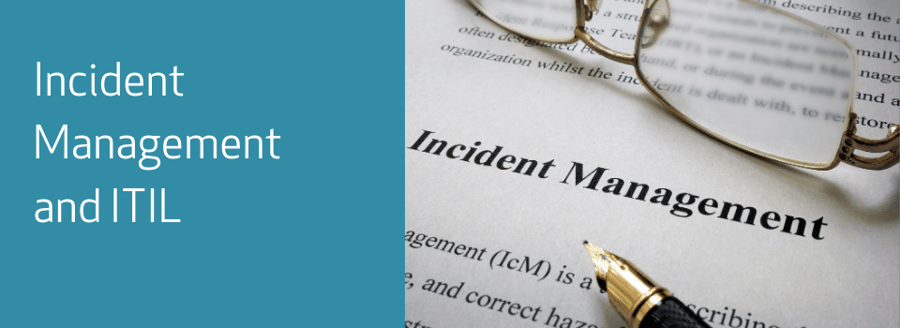Whatever the latest trends in ITSM – and indeed ITIL – at the heart of the matter is still the resolution of issues, ticketing, AKA incident management.
What does Incident Management mean in ITIL?
The most common scenario: something doesn’t work and the user needs help as quickly as possible, so they report it to IT.
The idea of incident management is equally applicable outside the IT domain, as service management spreads enterprise-wise; however the basic process concept of identifying and managing an “incident” whether that is IT related or, for example, an HR issue, from recording to resolution is the same and the fundamentals are unavoidable. Good ITSM Software can make it quicker of course, but there are no shortcuts to the requirements of incident management in IT or elsewhere.
The basics have no exceptions – every call should be logged, details completed making the important ones mandatory and with as few clicks as possible, and the issue categorised so severity of impact on the user can be assessed for example. If supporting technology like dynamic searching can speed things up, that’s all an advantage but it doesn’t remove the required basics. Once the information’s in place then other matters fall into place, SLAs, prioritising responses and allocating issues to the most appropriate resources to resolve, all spin off from the basics of incident management.
As a starting point now, having complete flexibility in how Incidents are raised in the first place is critical – self-service is increasingly the most popular (and efficient) method as it both empowers and potentially educates the end-user to resolve the issue – while saving IT resources – but “good old” phone and email communications (with fully automated linking and tracking) are not 100% going away anytime soon. An increasingly important option is integration with 3rd party products to report an incident, which is now straightforward using the REST API technology integrated with the ITSM platform.
Key to all incident management is speed and efficiency; the ability to record and classify Incidents quickly and gain a full audited history of all customer support interactions being the starting point. Thereafter, speed of resolution is the primary concern, ideally at first call or, if not, then with detailed tracking of that incident – often against a target SLA or at least an assigned priority level. The more efficient the incident management, the faster the resolution, the happier – and more productive – the user base and the lower the overall cost of service delivery becomes. A win-win-win scenario, in other words!
Automation of common and/or complex processes is fundamental in achieving consistency in incident management which creates these levels of efficiency. Training the team will minimise human error – which is unfortunately inevitable – and needs to be minimised while at the same time, the software should be the invisible hand guiding the user through the resolution process. Automation of the most common incident management actions is now considered best practice. Don’t allow for or encourage errors and it helps the end customer. Allied to this, increased visibility across all service desk activities – and the ability to analyse the performance of the service desk – ensure that efficiency levels are maintained or improved upon.
Of course, incident management isn’t the be-all and end-all of best practice ITSM, if IM represents the ‘one off’ issue, repeated issues may require problem resolution and a change, but it all starts somewhere and with the information of high standard call logging.
A last word? Don’t be fooled by simplicity. It may look easy to achieve all streamlined incident management in IT and beyond, but the supporting software has been honed over many years – more than 25 years in Sunrise’s case. So many companies have started with a spreadsheet and hit the limits of management pretty quickly – by all means try that approach – then contact us for a demo.
Watch our videos about incident management, self-service or automation.
> Read our ‘Guide to ITIL‘.




.png)
